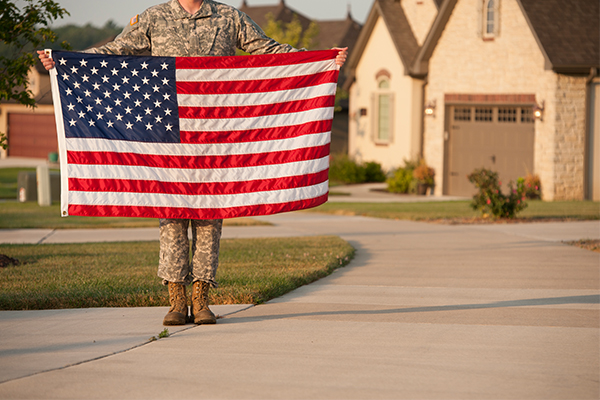When it comes to home financing for veterans and active-duty military personnel in California, two primary options stand out: the VA Loan and the CalVet Loan. While both are designed to help those who have served or are currently serving in the military, they have distinct differences that could impact which loan is the better choice for you. Here’s a breakdown of the key differences between a VA Loan and a CalVet Loan.
1. Loan Backing and Funding
- VA Loan: Backed by the U.S. Department of Veterans Affairs, a VA Loan is funded by private lenders, such as banks or mortgage companies. The VA guarantees a portion of the loan, which reduces the risk for the lender and typically allows for more favorable terms for the borrower, such as no down payment and no private mortgage insurance (PMI).
- CalVet Loan: The CalVet Loan, on the other hand, is funded and serviced by the California Department of Veterans Affairs (CalVet). Instead of using private lenders, CalVet directly funds the loan. This program aims to offer competitive rates and unique benefits tailored to California veterans.
2. Property Ownership
- VA Loan: With a VA Loan, the borrower holds the title to the property as soon as the loan closes. The borrower is the full owner, and the lender holds a lien on the property until the loan is paid off.
- CalVet Loan: CalVet loans are unique in that the state of California holds the legal title to the property until the loan is paid off. The veteran has an equitable interest in the property, and full ownership is transferred once the loan is fully repaid.
3. Eligibility and Requirements
- VA Loan: To qualify for a VA Loan, borrowers must meet service requirements, which generally include serving 90 consecutive days of active duty during wartime, 181 days of active duty during peacetime, or 6 years in the National Guard or Reserves. Additionally, the borrower must have a Certificate of Eligibility (COE) from the VA.
- CalVet Loan: Eligibility for a CalVet Loan also requires a COE, but applicants must be California residents and meet CalVet’s specific service requirements. Additionally, the property must be the borrower’s primary residence, and the loan is typically limited to the purchase of single-family homes, including farms with homes and mobile homes on land.
4. Interest Rates and Terms
- VA Loan: Interest rates on VA Loans are typically competitive, but they can vary depending on the lender and market conditions. VA Loans usually offer 15- to 30-year terms.
- CalVet Loan: CalVet Loans often offer competitive interest rates that may be lower than traditional VA Loans. CalVet also provides several loan term options, with some loans offering terms up to 40 years. Additionally, CalVet provides specific insurance benefits, such as fire, disaster, and flood insurance at reduced rates.
5. Additional Benefits
- VA Loan: VA Loans allow for no down payment in most cases, no PMI, and have more lenient credit requirements compared to conventional loans. The VA also limits the amount of closing costs a borrower can be charged.
- CalVet Loan: In addition to competitive interest rates, CalVet Loans offer unique benefits such as access to state-funded life and disability insurance programs. The program also includes special provisions for disabled veterans and active-duty service members.
Conclusion
Both the VA Loan and the CalVet Loan provide excellent opportunities for veterans and active-duty service members to achieve homeownership. The best choice depends on your specific circumstances, including where you live, your financial goals, and your eligibility. Understanding the differences between these two loans can help you make an informed decision that best meets your needs.

